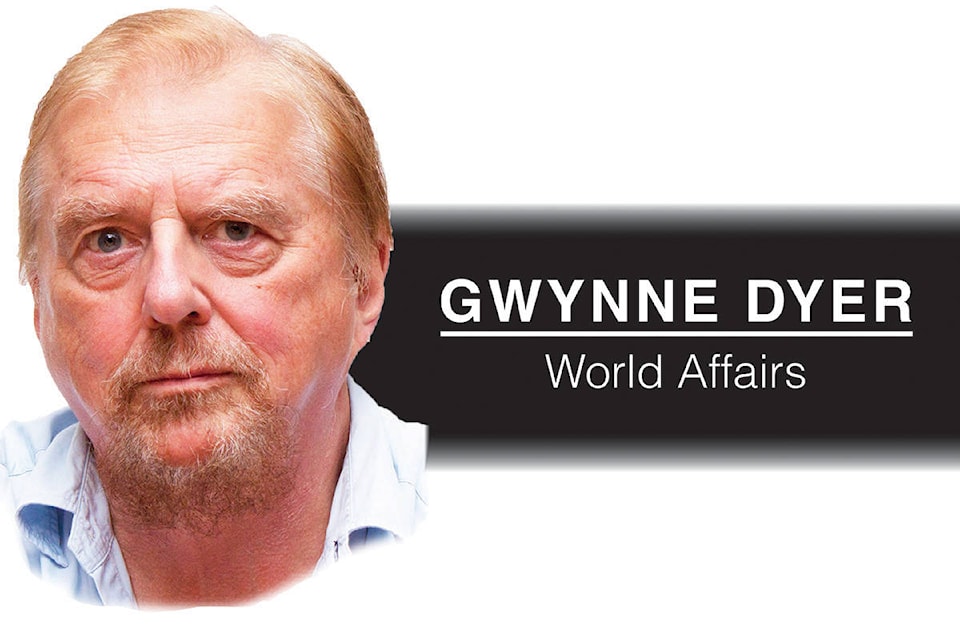On Monday we were treated to two pieces of public performance art, one by Israeli Prime Minister Binyamin Netanyahu and the other by Mahmoud Abbas, the closest thing the Palestinians have to an agreed national leader (which is not very close). Both performances were beyond bizarre, and taken together they demonstrate how politicians whose lives are dominated by the Arab-Israeli dispute are ultimately reduced to self-caricature.
Abbas’s contribution was a rambling 90-minute speech to the Palestinian National Council, the (unelected) legislature of the Palestine Liberation Organisation. It’s the first full meeting of the Council in 22 years, and an attempt by Abbas to restore some measure of legitimacy to his own position as President of the Palestinian Authority.
Abbas has lacked all legitimacy since his last legal term as president expired nine years ago. He survives as the nominal leader because (a) it suits the Israeli government and (b) the Palestinians are so hopelessly divided that nobody bothers to challenge his claim to be the leader.
The ‘peace process’ has been dead for twenty years. President Trump is moving the US embassy in Israel from Tel Aviv up to Jerusalem despite anguished Palestinian protests. Hamas, the Islamist rival to Abbas’s Fatah movement, controls the Gaza Strip and almost half the Palestinian population in the occupied territories, and it doesn’t even deign to send delegates to Abbas’s meeting. So what was Abbas’s speech about? History.
Not even real history. Fantasy history, in which the Jews of Europe brought the Holocaust down upon themselves by choosing to fulfill a specific (and lucrative) ‘social function’. “The Jewish question that was widespread throughout Europe,” Abbas explained, “was not against their religion but against their social function which relates to usury and banking and such.”
Whatever Abbas may believe privately – and he may not believe much of anything after thirty years in the Hall of Mirrors that is Palestinian politics – he would once have known better than to say such vile nonsense in public. But all hope is gone, and there is nothing useful left to say, so he just dredges up the weary old Holocaust denial stuff he played with as a student and serves it raw to an equally despairing audience.
Binyamin Netanyahu, by contrast, is on the winning side, and his contribution on Monday was an up-market, updated version of his celebrated performance at the United Nations in 2012. That was when he showed the General Assembly a child-like drawing of a bomb (the kind 19th-century terrorists used to throw, with a fizzing fuse at the top) and warned the diplomats that Iran would have a nuclear weapon by 2013.
It didn’t, of course. Iran’s brief period of working on nuclear weapons, triggered by Pakistan’s six nuclear weapons tests of 1998, had already ended in 2003 according to the testimony of the International Atomic Energy Agency (IAEA), and even Netanyahu’s own intelligence agencies agreed with that assessment.
In 2015 Tehran agreed to allow strict international inspections to guarantee that no work on nuclear weapons, even of the most preliminary sort, would be done for the next ten years. Netanyahu, who is paranoid on the subject of Iran, would have greatly preferred a ‘pre-emptive’ attack on Iran – and now he has an ally in Donald Trump, who also wants to kill the 2015 deal.
So Bibi did another show-and-tell performance on prime-time Israeli television, all in English and aimed at the global audience, in which he sorta kinda claimed that Iran was cheating on the agreement and still working on nuclear weapons. One of the visuals even said (in metre-high letters) “Iran lied”.
Netanyahu didn’t lie, of course; politicians seldom do. He just stood in front of aerial photos and images of documents and talked about recently acquired Iranian secret documents that showed the country had an active nuclear weapons programme. And it was all true – except that the Iranian programme in question was mostly closed down in 2003, and completely dead by 2009.
“There was nothing there,” said Alexandra Bell, senior policy director at the Centre for Arms Control and Non-Proliferation. “There was nothing the IAEA didn’t know, and all the theatrics and circa-2004 PowerPoint were a bit silly.” So why did Netanyahu do it?
Partly it was to provide something resembling a justification for his friend Trump’s forthcoming abandonment of the 2015 Iran deal. People who were not paying close attention might walk away from Netanyahu’s dog-and-pony show thinking he had proved that Iran was cheating on its commitments.
But mainly he did it because he lives in a political environment so polarised, so toxic, that people who are immersed in it gradually lose touch with reality. Even as Netanyahu carefully manipulated the facts in order to create a false impression, at another level he probably believed that he was expressing a deeper truth. He’s a winner, not a loser, but he is just as much trapped on the wheel as Abbas.
Gwynne Dyer’s new book, ‘Growing Pains: The Future of Democracy (and Work)’, is published this month by Scribe in Canada, the United States, the United Kingdom, Australia, New Zealand.
